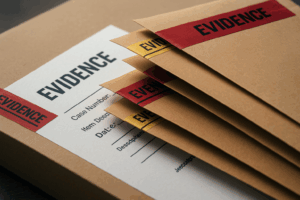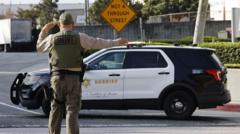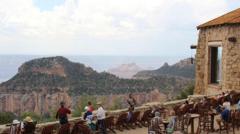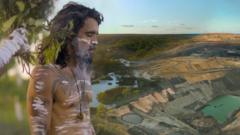Lauded as pristine leisure spots, Los Angeles beaches like Will Rogers State Beach now sit amid hazardous debris due to ongoing clean-up efforts after the Palisades Fire. Environmental activists and concerned citizens rally for safety even as cleanup machinery replaces beachgoers, drawing attention to the urgent need for a safe and thorough examination of ocean quality.
Loss and Recovery: The Aftermath of LA's Wildfires on Iconic Beaches
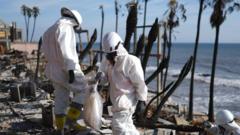
Loss and Recovery: The Aftermath of LA's Wildfires on Iconic Beaches
Iconic California beaches face a grim transformation following devastating wildfires, raising concerns over environmental safety and community recovery.
The sun-kissed shores of California, famed for their lively beaches and vibrant surf culture, are now grappling with the aftermath of devastating wildfires that have altered their landscapes and safety standards. An iconic location featured prominently in the classic series "Baywatch," Will Rogers State Beach finds itself surrounded by the charred remnants of buildings and the debris of burned palm trees, as crews from the Environmental Protection Agency (EPA) work tirelessly in hazmat suits handling toxic waste from these catastrophic events.
The Palisades and Eaton fires generated an astronomical amount of debris, estimated at 4.5 million tonnes—staggering when compared to the 400,000 tonnes resulting from the fires in Maui in 2023. While cleanup efforts in Maui dragged on for nearly three months, the EPA has been tasked with expediting the removal of the hazardous waste in Los Angeles within just a month. This demand was entrenched in an executive order from President Trump, emphasizing the urgency of the situation.
As the EPA begins this unprecedented clean-up, protests are rising among local activists, including actress and environmental advocate Bonnie Wright, who voice concerns about the chosen waste sorting locations being too close to eco-sensitive areas. Despite their pleas to move operations further from Topanga Creek, they achieved a partial victory in ensuring particularly dangerous materials such as burned electric vehicle batteries were shifted away from critical watersheds.
The heightened risks posed by damaged lithium-ion batteries—the possible reinvigoration of flames long after initial contact—prompt a cautious response from EPA officials. Despite criticisms regarding the swiftness of the clean-up, they assert the importance of immediate action to prevent further contamination of nearby ocean waters.
Environmental fluctuations following the initial fires led to mudslides and toxic runoff into the ocean, prompting beach closures up and down the coast. While the majority of recreational areas have since reopened, health advisories persist, steering local residents and tourists away from surf and sand until further assessments confirm the absence of hazardous materials.
As local scientists and volunteers collaborate to gather and analyze water and soil samples, the pressing question remains: when will those beaches, and the ocean waters, be deemed safe once more? The Surfrider Foundation and Heal the Bay are active in this endeavor, yet the results of toxic analysis can stretch as long as six weeks.
The scars left by these fires have evoked profound emotional responses from community members, especially those like Chad White, a lifelong surfer whose connection to Will Rogers State Beach runs deep. He reflects on the desolation of a once vibrant beach that now resembles a toxic waste site, invoking memories entwined with surfing there since childhood.
As Los Angeles grapples with this environmental catastrophe, the spirit of community resilience remains strong, embodying a shared wish for healing and restoration. Local advocates, scientists, and everyday beach users unite, seeking clarity on health protocols and a hopeful return to their cherished coastal landscapes, now faced with both loss and the challenges of recovery.

